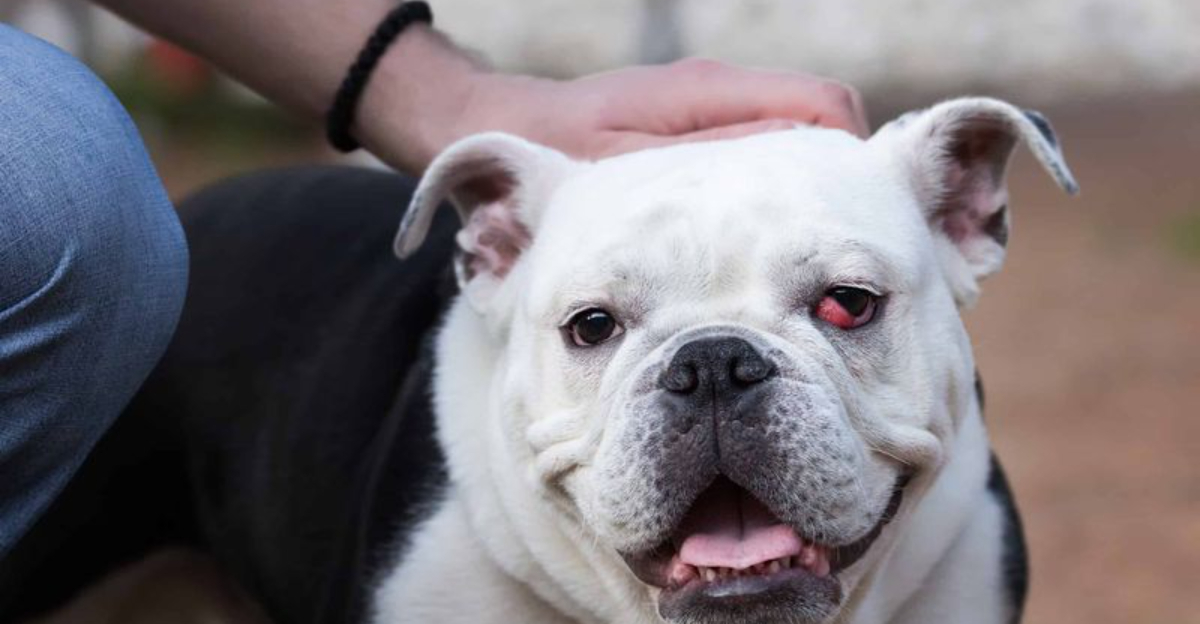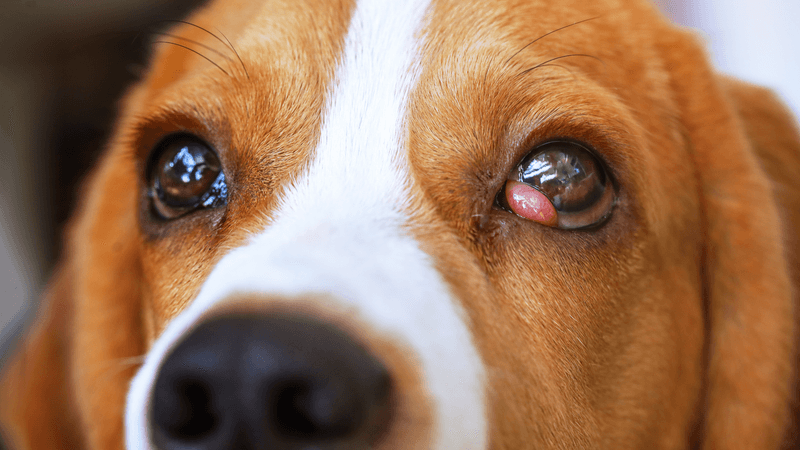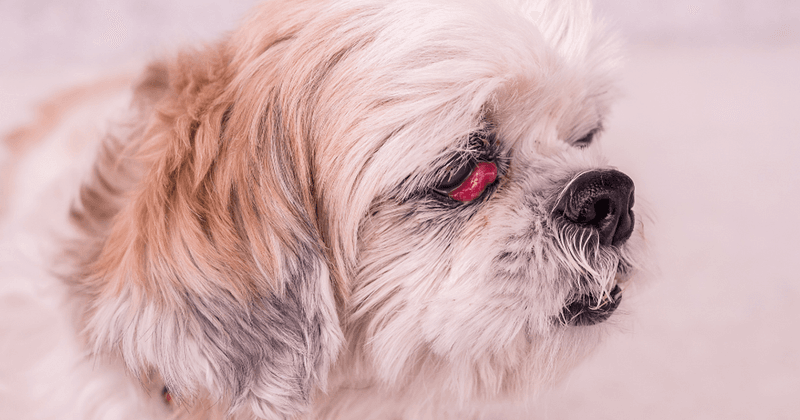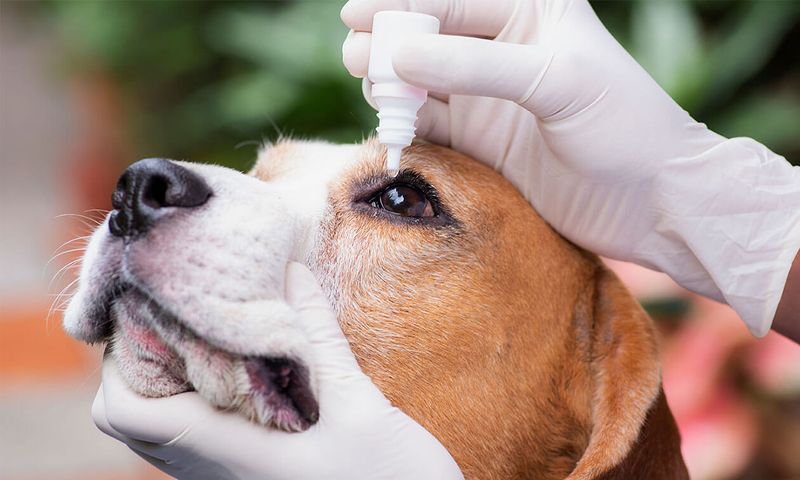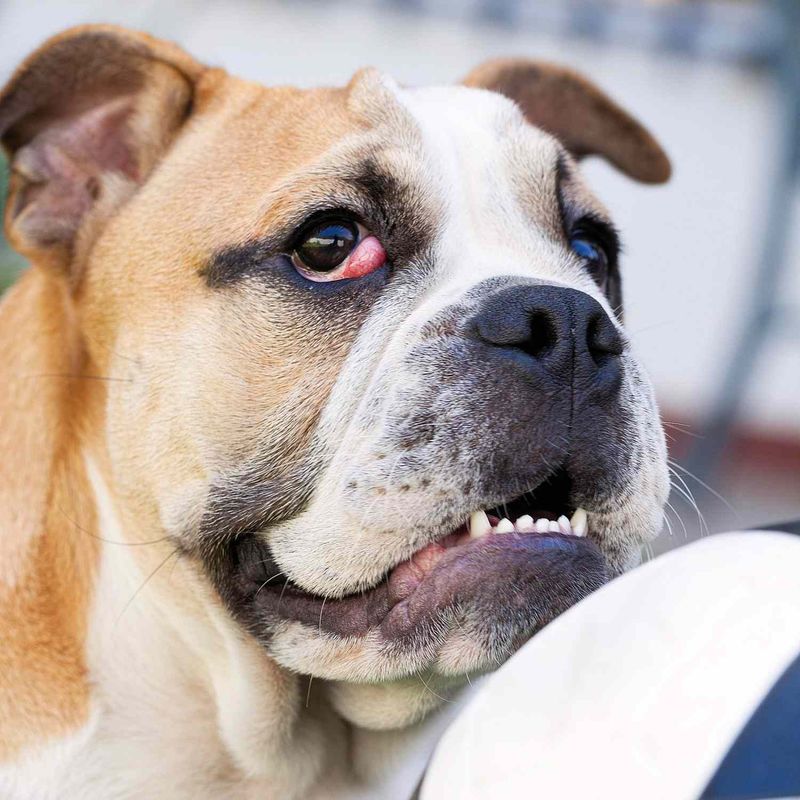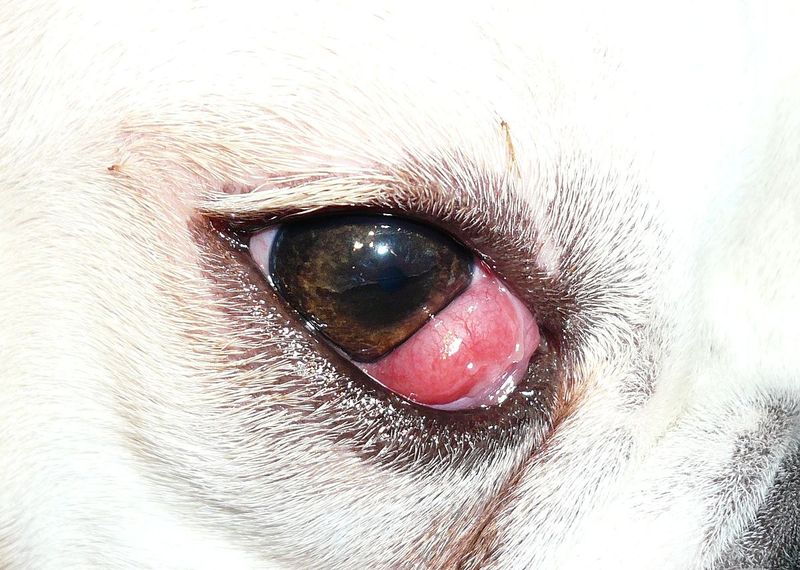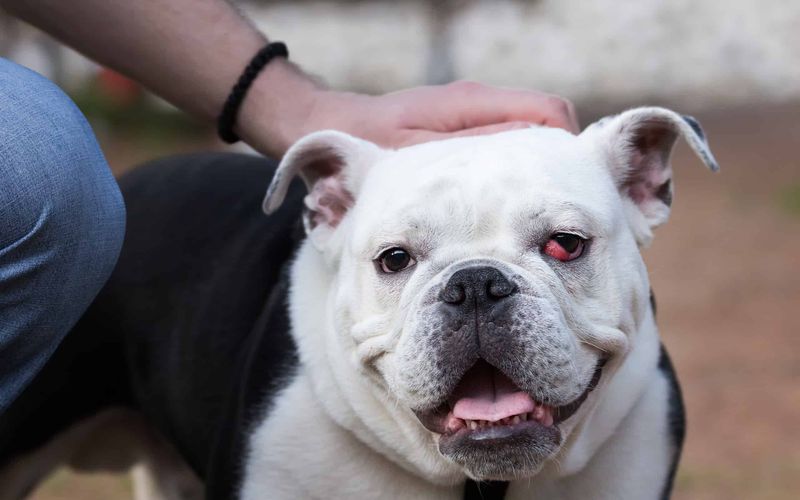Cherry eye in dogs is a condition where the third eyelid prolapses, causing a red, swollen appearance in the corner of the eye. Common among several dog breeds, this condition can affect your pet’s vision and comfort. Understanding the facts about cherry eye can help in managing and treating this issue effectively. Here are six vet-backed facts about cherry eye in dogs.
What is Cherry Eye?
Cherry eye occurs when a dog’s third eyelid, or nictitating membrane, prolapses. This gives the eye a red, swollen appearance, often likened to a cherry. The condition is not painful but can lead to complications if untreated. Some breeds, like Bulldogs and Beagles, are more predisposed due to genetic factors. The third eyelid contains a tear gland essential for eye lubrication, and its displacement can affect tear production. Early detection and veterinary consultation can prevent further issues. Proper management includes keeping the area clean and watching for signs of irritation.
Commonly Affected Breeds
Bulldogs, Beagles, and Cocker Spaniels are among the breeds commonly affected by cherry eye. This predisposition is often linked to genetic factors influencing the connective tissue. Owners of these breeds should be vigilant for signs of cherry eye, especially in puppies. Knowing the breed’s susceptibility can lead to early detection. Some breeds may experience cherry eye in both eyes, increasing the importance of regular check-ups. It’s crucial for owners to understand the hereditary nature to manage expectations and care strategies, ensuring the dog’s wellbeing.
Symptoms and Diagnosis
Symptoms of cherry eye include a visible red or pink mass in the corner of the eye. This is often accompanied by excessive tearing or discharge, leading to irritation. Veterinary diagnosis involves a physical examination and possibly imaging to assess damage. Early diagnosis can prevent secondary infections. Owners should watch for changes in behavior, such as rubbing the eye. Regular veterinary visits can help in monitoring the condition’s progression. Prompt attention to these symptoms is vital for health. Understanding these signs can aid in seeking timely medical advice.
Treatment Options
Treatment for cherry eye often involves surgical intervention to reposition the gland. There are several surgical techniques, including the popular ‘tacking’ procedure. Post-surgery, a dog will require care to prevent infection and ensure healing. Sometimes, medication to reduce inflammation is prescribed. In some cases, the gland may need removal if it’s severely damaged. Surgery success rates are high, but recurrence can happen, necessitating further treatment. It’s important for dog owners to discuss options with their vet. Understanding these treatments helps in making informed decisions.
Preventing Cherry Eye
Preventing cherry eye involves maintaining overall eye health and being vigilant about any changes. While genetics play a role, regular veterinary check-ups can detect early signs. A balanced diet and regular exercise support overall wellbeing, potentially minimizing risks. Owners should keep an eye out for environmental irritants. While complete prevention may not be possible, these measures can lower the likelihood of occurrence. Understanding the factors that contribute to cherry eye can empower dog owners. Proactive care is key in managing the health of predisposed breeds.
Prognosis and Long-Term Management
The prognosis for dogs with cherry eye is generally positive with proper treatment. Long-term management includes monitoring for recurrence and maintaining eye health. Regular follow-ups with the vet are essential. Most dogs recover well post-surgery, living comfortable, normal lives. Owners should remain vigilant for any signs of irritation or recurrence. Maintaining a clean environment and good hygiene practices can support long-term health. Understanding the condition’s nature helps in alleviating concerns. With the right care, dogs can enjoy a healthy life post-cherry eye treatment.
Genetic Predisposition
Genetic predisposition plays a significant role in cherry eye. Certain breeds, like Bulldogs and Beagles, are more susceptible. This hereditary condition often appears in young dogs, typically under two years old.
Understanding the genetic links can help in early monitoring and intervention. Knowing a dog’s lineage and being aware of potential risks allows owners to seek veterinary advice sooner.
Proactive care is crucial, as early treatment can prevent complications. Timely intervention helps avoid discomfort and potential damage to the eye. Owners should consult their vets if they notice any abnormalities in their dog’s eyes.
Impact on Vision
Cherry eye can impact a dog’s vision, especially if left untreated. The protruding gland may cause irritation or infection, leading to visual impairment.
Older dogs or those with chronic conditions might experience more severe effects. It’s essential to monitor any changes in behavior that might suggest vision problems.
Treating cherry eye promptly can mitigate these issues, preserving the dog’s quality of life. Owners should be mindful of their pet’s comfort and seek regular veterinary check-ups. Protecting the eye from further damage is vital for maintaining overall eye health.
Innovative Surgical Techniques
Recent advancements in veterinary surgery have introduced innovative techniques to correct cherry eye. These methods aim to reposition the gland securely, minimizing recurrence.
Surgical intervention is often recommended for permanent resolution. The choice of technique depends on the dog’s specific condition and the vet’s expertise.
Post-operative care is crucial for recovery. Following the vet’s guidance ensures a smooth healing process and reduces the chance of complications. Such advancements have improved outcomes, offering hope for affected dogs and their owners.
